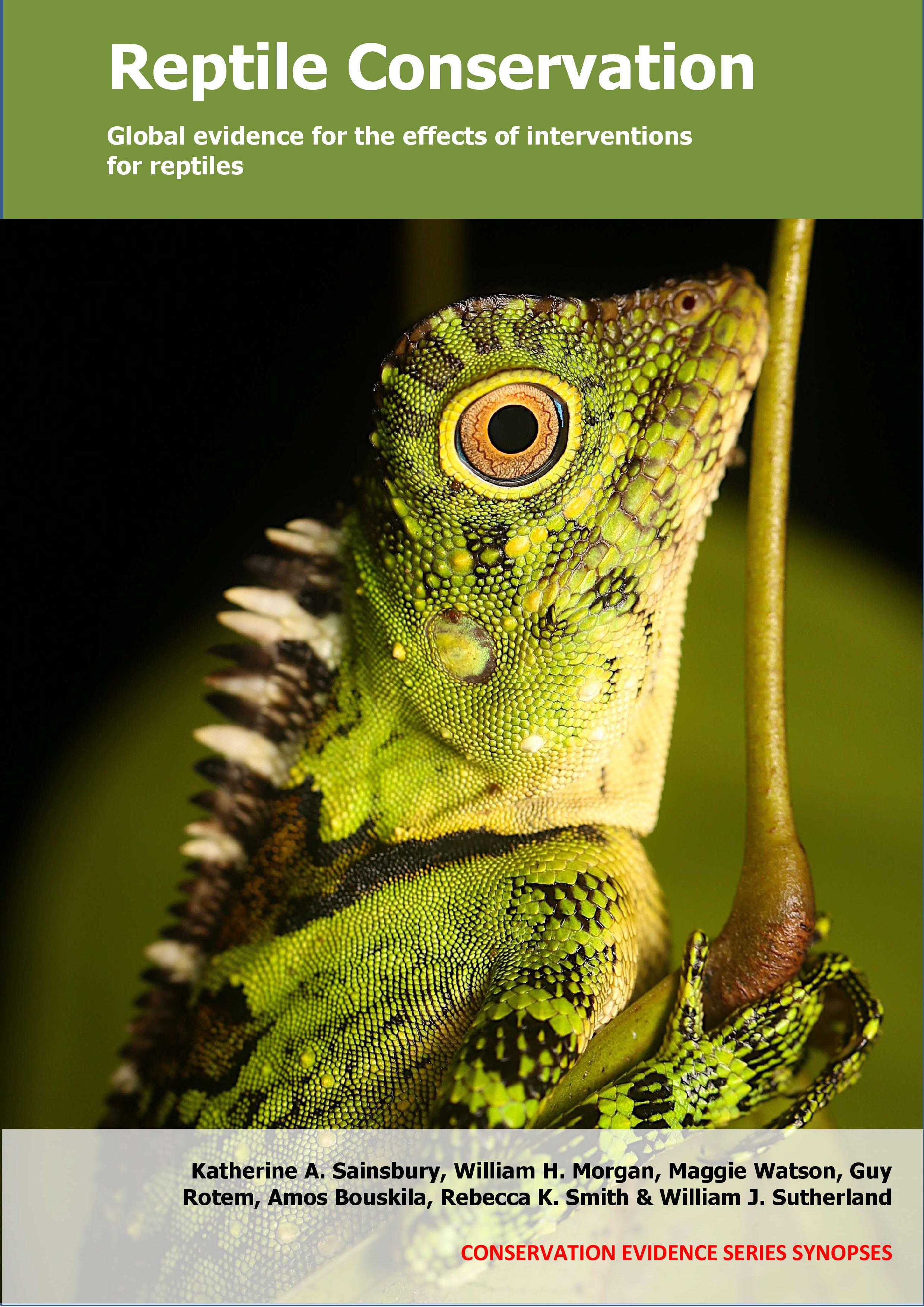Remove or control predators using lethal controls: Sea turtles
-
Overall effectiveness category Awaiting assessment
-
Number of studies: 4
View assessment score
Hide assessment score
How is the evidence assessed?
-
Effectiveness
not assessed -
Certainty
not assessed -
Harms
not assessed
Study locations
Supporting evidence from individual studies
A replicated, randomized, controlled study in 1993–1994 on a long sandy beach in Florida, USA (Ratnaswamy et al. 1997) found that raccoon Procyon lotor control on sections of beach did not reduce predation of loggerhead turtle Caretta caretta nests compared to sections with no control. Predation of turtle nests was similar in sections of the beach with raccoon control (1993: 489 of 1,359 nests, 36% predation; 1994: 460 of 1,686, 27%) and those with no control (1993: 72 of 231 nests, 31%; 1994: 92 of 379, 24%). In 1993–1994, a long stretch of barrier beach (37 km) was broken down into four experimental blocks, and around half of each block (4 km) was selected for raccoon removal. Raccoons were captured with live traps baited with sardines, anesthetised and lethally injected (215 individuals; estimated as 50% of raccoon population). Nests in the remainder of the block were either received no treatment or were part of further tests of the effect of nest screening and taste aversion on predation. Nests were monitored 2–4 times/month in 1993 and 2–3 times/week in 1994.
Study and other actions testedA before-and-after study in 2002–2004 on a sandy beach in Florida, USA (Engeman et al. 2006) found that disruptions to the control of raccoons Procyon lotor and invasive armadillos Dasypus novemcinctus resulted in reduced survival of loggerhead Caretta caretta, leatherback Dermochelys coriacea and green turtle Chelonia mydas nests due to predation. In 2002–2004, months when predator control was consistent across all years (May), nest survival was similar (>80% after 80 days). However, disruptions to control in June 2004 resulted in lower survival for nests laid in June–July 2004 (60–70% after 60–80 days) compared to June–July 2002–2003 (>80% after 60–80 days). In 2002–2004, raccoons were live trapped and killed, and both raccoons and armadillos were shot (0.22 calibre rifle with a noise suppressor and night-vision equipment). In 2004, predator control ceased for 2 weeks in June, re-started in July, and then ended completely in August. The beach was monitored daily starting in March 2002–2004, and all leatherback and green turtle nests were marked, but only every eighth loggerhead nest marked and monitored. Marked nests were monitored daily for predation and excavated after hatchling emergence to assess hatching success.
Study and other actions testedA controlled, before-and-after study in 2006–2008 on two barrier islands in Florida, USA (Engeman et al. 2010) found that eradication of racoons Procyon lotor and feral pigs Sus scrofa resulted in lower predation rates of loggerhead turtle Caretta caretta nests compared to sites with no predator control. Predation of sea turtle nests was lower following predator removal (0–16% of 2–143 nests) compared to before predator removal began (60–84% of 20–76 nests). Two study islands were established with no predator control taking place in 2006. Control of raccoons and feral swine began in 2007 on one island and in 2008 on the other. Raccoons and pigs were captured in baited traps, and free-roaming pigs were also shot with a noise suppressed rifle. Sea turtle nests were monitored by patrolling beaches in the morning during the turtle nesting season noting new nests and evidence of predation.
Study and other actions testedA before-and-after study in 2007–2010 on a sandy beach on an island off the coast of Florida, USA (Engeman et al. 2016) found that eradicating feral pigs Sus scrofa ended pig predation of unhatched loggerhead Caretta caretta and green turtle Chelonia mydas nests. In the nesting season after feral pigs were eradicated, no marine turtle nests were lost to pig predation, compared to 50 of 50 nests predated by pigs in the nesting season prior to their eradication, including 36 nests covered with nest cages. In 2005–2010, turtle nests were monitored daily throughout the nesting season on a 13.4 km long stretch of beach on an island (526 ha). In 2007, nest predation by pigs was observed for the first time (pigs were present on the island from 2001). In May–June 2008, a total of 39 feral pigs were eradicated from the island by trapping and shooting over bait. Following eradication, no spoor or other signs of feral pigs were found. The authors reported that pigs reinvaded the island in 2014. Thirty-six of the 50 nests monitored had been covered by partially buried cages (91 cm long x 91 cm wide x 76 cm tall, 5 x 10 cm wire mesh) to protect them from raccoon predation. After hatching, all nests were excavated to record hatching success and predation levels. See ‘Use nest cages’ for more details on their effectiveness.
Study and other actions tested
Where has this evidence come from?
List of journals searched by synopsis
All the journals searched for all synopses
This Action forms part of the Action Synopsis:
Reptile Conservation
Reptile Conservation - Published 2021
Reptile synopsis





)_2023.JPG)














